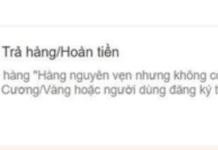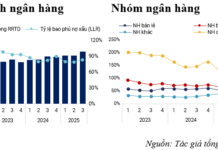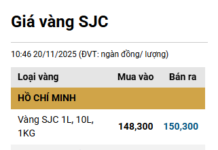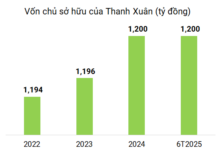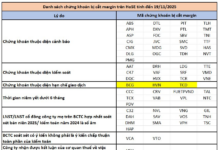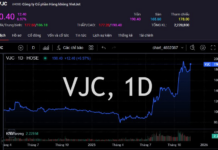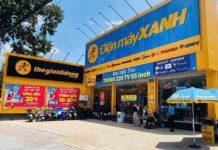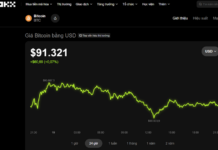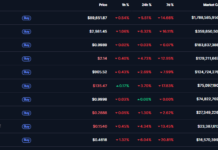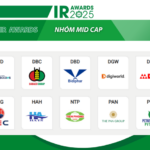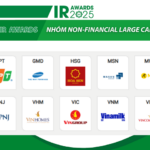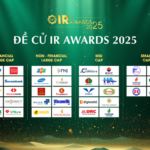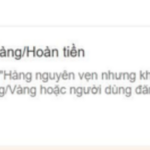What constitutes a “high-quality” disclosure?
A high-quality disclosure simultaneously meets the following criteria: completeness, timeliness, accuracy, transparency, and, importantly, accessibility. This entails disseminating information through official channels, presenting it clearly and coherently, and facilitating a quick understanding of the issue at hand.
In reality, the quality of disclosures by listed companies has improved in recent years. However, there are still instances of delays, incomplete information, or the use of accounting adjustments to “beautify” financial reports, raising questions about the veracity of the information.
Moreover, there are differences between industry groups and company sizes in the stock market. Contrary to small businesses, large enterprises typically have a well-established governance system and a professional IR team, resulting in more timely and transparent disclosures. In terms of industry groups, heavily regulated sectors such as banking, securities, and insurance tend to have better information disclosure practices, with more professional and open IR teams compared to sectors like real estate and construction, where cash flow transparency remains an issue.
“Template” disclosures no longer meet market expectations
A noteworthy fact is that numerous businesses still adhere to a “template” approach when explaining stock price fluctuations or financial results. Specifically, when stocks hit the ceiling or floor for multiple sessions, most companies briefly explain that it is “due to market supply and demand” without elucidating the underlying factors.
Meanwhile, investors and analysts yearn for insights into core information that has not been disclosed to the market, such as preliminary financial results, newly signed contracts, expansion plans, potential risks, or adverse events. In essence, investors seek compelling information to elucidate the stock’s movement. A company’s decision to remain silent or provide vague responses not only causes confusion but also significantly undermines its credibility in the market.

High-quality disclosure entails more than merely stating “there is nothing unusual”; it necessitates demonstrating proactivity, transparency, and accountability in conveying information to the market. Businesses can leverage disclosure opportunities to share insights that enhance investors’ comprehension of the current context.
Similarly, in quarterly or annual financial explanation reports, numerous enterprises merely reiterate figures already present in financial statements without elucidating the causes of fluctuations. This not only diminishes transparency but also complicates analysts’ tasks in valuing growth quality, identifying trends, and making investment recommendations. A high-quality explanatory report should elucidate factors influencing fluctuations, such as selling prices, capacity, output, product mix, exchange rates, and unusual income/expense items, while indicating whether these factors are likely to persist in the future.
How businesses cope with adverse information is an IR competency gauge
Information disclosure isn’t merely about showcasing positive achievements. Indeed, how enterprises navigate unfavorable information, such as declining financial performance or legal risks, can serve as a crucial test of their IR prowess.
Companies with professional IR practices typically proactively disclose adverse information, providing clear content accompanied by analyses of causes, impact assessments, and response plans. They also actively engage with investors to adjust market expectations.
Conversely, numerous businesses only disclose when compelled or when market rumors surface, offering vague responses like “impacted by objective factors” or “will update later.” Such actions not only erode market trust but also diminish their standing among institutional investors—entities that highly value transparency and accountability.
Meeting investors’ information expectations
Another crucial aspect is the disparity between the information needs of analysts (sell-side) and investors (buy-side). Failing to grasp this distinction can render IR efforts ineffective and undermine market transparency.
From a sell-side perspective, NHSV, in its analytical process for providing investment recommendations, focuses on collecting detailed and regularly updated data. Factors such as revenue by segment, profit margins, cash flow, costs, and project progress are commonly considered, and companies with clear reports, comprehensive datasets, regular investor meetings, and swift responses are highly regarded.
On the other hand, buy-side entities, encompassing investment funds and institutional investors, prioritize long-term strategies and management capabilities. They seek insights into 3–5-year strategies, capital plans, risks, ESG considerations, and often expect direct engagements with senior management through 1-on-1 meetings, roadshows, or investor days.
In today’s capital market, transparency isn’t just about regulatory compliance; it’s a pivotal communication strategy for fostering trust, attracting capital, and enhancing enterprise valuation. As a liaison between businesses and investors, NHSV upholds transparency, accuracy, and proactivity in information disclosure, deeming these tenets as fundamental for assessing enterprise health, discerning investment trends, and fostering a sustainable capital market.
Pham Hai Hoang – Head of Vietnam Securities Company’s (NHSV) Analytics Department
– 10:00 22/08/2025
Nomination for IR Awards 2025: Outstanding Mid-Cap Companies in the Finals
CTD, DBC, DBD, DGW, DRC, GEG, HAH, NTP, PAN, and PVT are the ten outstanding mid-cap companies that have advanced to the IR Awards 2025 finals, taking place from August 1st to 14th, 2025.
10 Non-Financial Large Cap Companies Nominated for IR Awards 2025
FPT, GMD, HSG, MSN, MWG, PNJ, VHM, VIC, VNM, and VRE are the top 10 non-financial large-cap enterprises that have made it to the IR Awards 2025 semifinals. These prestigious companies will showcase their excellence and compete from August 1st to 14th, 2025, in a showcase of Vietnam’s economic prowess.
Unraveling the Complex Web of Cross-Ownership and Bank Overholding
Although the Law on Credit Institutions has reduced the maximum ownership ratio of organizational and individual shareholders in banks, it is not easy to handle the excess ownership ratio overnight.


